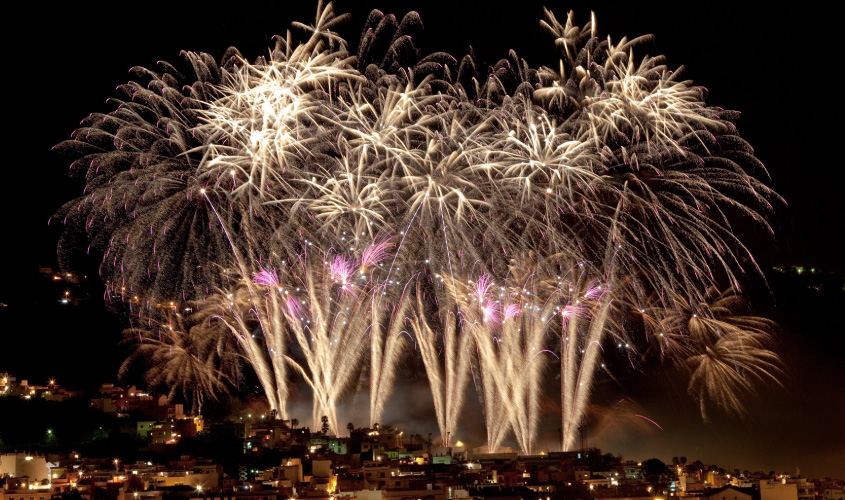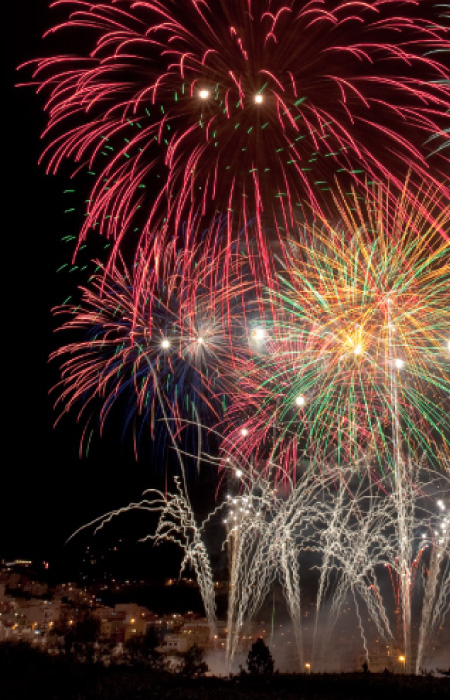

Two streets,
one feeling


Dos clases sociales

Una batalla majestuosa

El carácter festivo
Thus, the rivalry between El Sol and El Medio was growing even though every year it looked impossible to overpass each other. Over time, when the inequalities were disappearing and the neighbours of both streets no longer had reasons for confrontation, they still carried on with the rivalry, but in a festive way.
The neighbours from both streets have achieved something that looked almost impossible to happen: to light up the night completely, with El Teide as a silent witness of that small miracle.
Tradition with lineage
This is why if in another time rivalry meant alienation among neighbours, it is today that represents union and common effort to keep the tradition.
A rivalry that does not have winners or losers, a battle that everybody wins. Nevertheless, to recognise the radical nature of this rivalry is also a sign of power, because the festival belongs to the people of the town and they are the ones who organize it and the ones who bring it to life.
Throughout history, the worship of the cross not only has been kept intact, but it has also strengthened. Families decorate their crosses, many times they are ancient inheritances from their ancestors, not only because of a religious meaning, but also because of lineage and the meaning of belonging. Year after year, chapels and altars are different, showing off a meticulous popular art that passes from one generation to another, as a tradition’s testimony. Although short-lived, the result of this art is shown in a blast of sensations that is never forgotten.
Because the May Festival of the Crosses and Fireworks cannot be understood without the floral arrangements that fill with colour, with life and with scents the town of Los Realejos.
